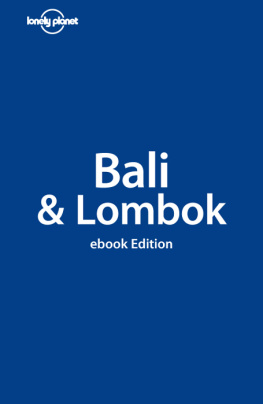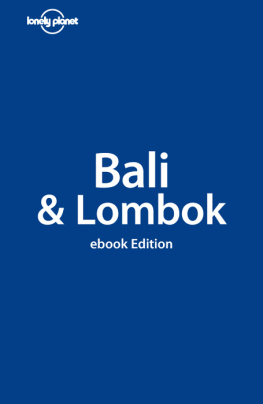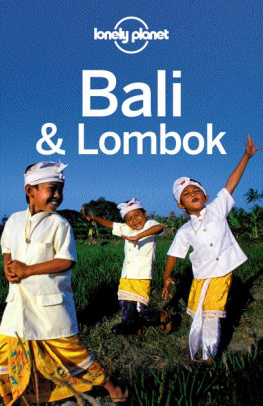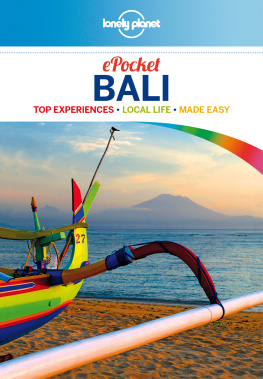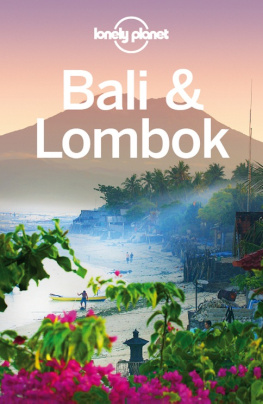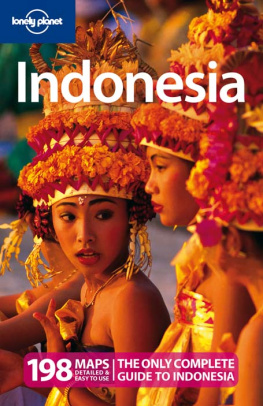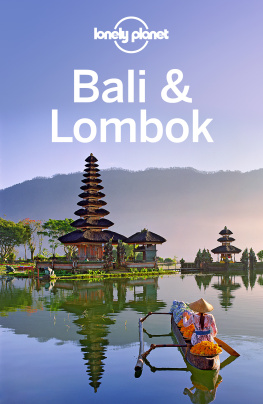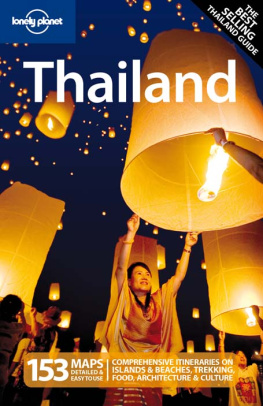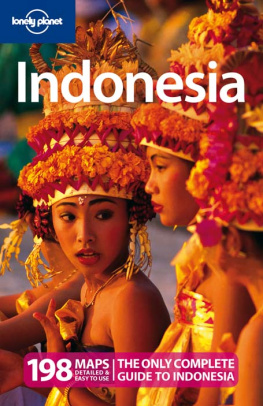Destination Bali & Lombok
It cant be said often enough Bali is like no other destination in the world. Its rich culture is played out at all levels of life, from the exquisite flower-petal offerings placed seemingly everywhere, to the processions of joyfully-garbed locals, shutting down major roads as they march to one of the myriad temple ceremonies, to the otherworldly traditional music and dance still being performed island-wide by a record number of troupes.
FAST FACTS
Population: Bali 3.5 million; Lombok 3 million
Percentage of land in Bali used for rice production: 20%
Average monthly wage of a tourism worker: US$70-150
Average midrange hotel: US$85 per night
Percentage Hindu in Bali: 92%; Muslim on Lombok: 93%
Down payment on purchase of a motorbike: US$30
Wet season: Oct-Mar
Dry season: Apr-Sep
Area: Bali 5620 sq km; Lombok 5435 sq km
Yes, Bali has beaches, surfing, diving and resorts great and small, but its the essence of Bali and the Balinese that make it so much more than just a fun-in-the-sun retreat. It is possible to take the clich of the smiling Balinese too far, but in reality, the inhabitants of this small island are indeed a generous, genuinely warm people. Theres also a fun, sly sense of humour behind the smiles; upon seeing a bald tourist, many locals exclaim bung ujan (todays rain is cancelled) its their way of saying that the hairless head is like a clear sky.
These very qualities are also cause for the constant hand-wringing and worry that Bali is doomed to choke on its very success. Although concerns that Balinese culture is imperilled by tourism have been heard since the 1920s (when visitors numbered fewer than 1000 a year), the fears may finally be gaining wide traction with visitor numbers passing two million in 2008 a record. (Lombok is also experiencing boom times, which may mean a new airport and new resorts in now-rural Kuta.)
This could all have contributed to the excitement surrounding the election of a new governor in 2008, notable given that no level of government inspires confidence in Bali (at the scene of an accident, the one thing all sides agreed upon was not to call the police). Made Pastika, who took office in August of 2008, is viewed as a genuine hero, the can-do former police chief who was given much credit for helping solve the 2002 Kuta bombings. The danger now though is that too much will be expected of him at a time when Bali faces some real problems, from its place within Islamic Indonesia, to the pressures of too many people trying to use too few resources, to the sheer popularity of a place that has too many people trying to make a buck however they can.
Pastika has also fuelled expectations with his campaign promises: to raise wages by 100%, ensure that Bali is not sold out to unfettered tourism and, all the while, protect Balis environment. Its an ambitious, daunting and some would say critical agenda for the future.
MODERN CHALLENGES
Pastikas concern about development and the environment reflects the top issue for locals and expats alike. Although its a problem far from unique to Bali, unconstrained development threatens some of the very qualities that make Bali a wonderful place to visit. The coast is especially vulnerable. In 2000, for example, there were just rice fields north of Seminyak, all the way to Pura Tanah Lot the hundreds of villas dotting that same landscape now illustrate the scope of the issue. Unfortunately, many of the problems are caused by builders simply ignoring existing rules put in place to combat these very issues.
There are rumblings though that a limit may have been reached. Theres a good chance that a 5km zone of exclusion will be enforced around Pura ; and locals in North Bali have confronted government officials who allowed villa projects to proceed under dubious circumstances.
As with so much else, there are calls across the island for Governor Pastika to get tough on the issue. With the rice fields of Bali succumbing to development by 700 to 1000 hectares a year, solutions will be needed soon before the villa-spotted fields of Kerobokan and Canggu become the norm. These solutions may pose very hard questions for the Balinese though, with the average youth now preferring a better-paying job in tourism than one working in the back-breaking conditions of the rice fields. Who would work the rice farms that are saved? And who would deny the farmers, who have never had anything, the money their land could bring them?
Balancing these concerns is a challenge going forward. Tourism has brought enormous benefits to the Balinese, evident from the economic and psychological crash that came when people stayed away after the 2002 bombings. And while no one should stay away out of fear for the islands future, it is good to know that theres a recognition that there is a limit to what the island can sustain.
Like a canary in a coal mine, water has served as a valuable warning to the Balinese that their beautiful island doesnt have unlimited resources. The images of rushing streams and gurgling rice fields are as much a part of Balis image as beaches and dance, but even this seemingly limitless commodity is imperilled by the islands growth.
BALI
As I mentioned this morning to Charlie
There is far too much music in Bali
And altho as a place its entrancing
There is also a thought too much dancing.
It appears that each Balinese native
From the womb to the tomb is creative,
From sunrise till long after sundown,
Without getting nervy or rundown
They sculpt and they paint and they practise their songs,
They run through their dances and bang on their gongs,
Each writhe and each wriggle,
Each glamorous wriggle
Each sinuous action,
Is timed to a fraction.
And altho the results are quite charming,
If sometimes a trifle alarming!
And altho all the Lovelies and Pretties
Unblushingly brandish their titties
The whole things a little too clever
And theres too much artistic endeavour!
Forgive the above mentioned Charlie,
I had to rhyme something with Bali.
Noel Coward (he wrote this to his travelling companion Charlie Chaplinduring a visit to Bali in the 1920s).
The Balinese are showing that they will find a way to adapt to this challenge as they have to so many others before. Sewer systems are being installed and water mains are replacing shallow wells that drain the water table. Visitors have also been important in raising awareness by demanding clean water and clean beaches. In fact, everyone visiting the island can have a positive impact just by following some of the tips in this book () for a green holiday.
Visitors also help preserve this paradise by demanding that businesses act responsibly and by giving their custom to those leading the way. The number of environmentally savvy businesses (such as those listed in the GreenDex) grows daily. Dive shops are teaching locals how to protect reefs and keep beaches clean, while hotels are ensuring that wastes are recycled properly.
A CULTURE THRIVES
The Balinese have always found a way to stay true to themselves, whether it was in the face of invasions from Java, volcanoes blowing their lid or while welcoming two million visitors. Who can question the ingenuity of people who today fly kites both so they can have fun and so they can talk to the gods?
In a world where change accelerates exponentially, the Balinese never forsake the very fundamentals of their society. They still ask where are you from? and where do you go? to figure out where you fit into the greater scheme. They still closely adhere to the

